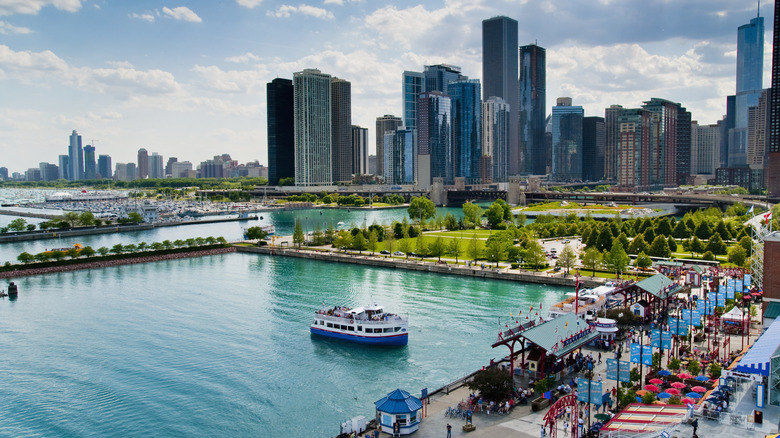A Lively Chicago Neighborhood Brims With Irish Culture, Art, Craft Beer, And Historic Homes
If you know anything about Chicago, you know it's the largest city in Illinois, and it sits on the edge of Lake Michigan, between Indiana to the east and Wisconsin to the north. Because of its sheer size and massive population, the city is full of diverse and unique neighborhoods.
For example, there's Edgewater, which hugs Lake Michigan's shores and is full of antique shops and beaches. Alternatively, there's Humboldt Park, which is also known as the "Center of Puerto Rican Culture."
But one of the most historic and beautiful neighborhoods in Chicago is Beverly. Located on the south side of the city, Beverly is known for three things: having the nickname "Beverly Hills," having a strong middle-class population, and having deep roots to Ireland. While you don't have to experience all of these things to get the most out of a visit of Beverly, you'll appreciate the quiet atmosphere and historic homes. So, let's get out our walking shoes and see what makes Beverly so special.
Getting to know the Beverly neighborhood in Chicago
Although Beverly was officially annexed as part of Chicago in 1890, it didn't really become a fully fledged neighborhood until the 1950s. Much of the area of modern Beverly was empty prairie for a long time, despite the first residence being built way back in 1886. That year, the real estate developer Robert Givins constructed a castle on the corner of 103rd Street and Longwood Drive. The castle still exists today and you can take a tour of the historic property.
For many years, Givins Castle and the rest of Beverly were part of the Washington Heights neighborhood. The castle marked the southern edge of the area, as residences basically stopped at 99th Street and Western Avenue. During the Post-War period, Chicago and its neighborhoods expanded, allowing Beverly to split from Washington Heights and become its own neighborhood.
Ironically, for much of Beverly's history, the area served as a dry community, sans saloons, liquor stores, and other drinking establishments. Today, there's a line of Irish pubs along Western Avenue. So, technically, they're on the border of Beverly but close enough to reverse the neighborhood's dry status.
What to do when visiting the Beverly neighborhood
There are a few ways to experience Beverly. First, you can admire the historic architecture of multiple buildings within the neighborhood. In addition to Givins Castle, you can see four houses designed by Frank Lloyd Wright. There's the Howard Hyde House (10541 S. Hoyne Avenue), the Guy C. Smith House (10410 S. Hoyne Avenue), the Raymond W. Evans House (9914 S. Longwood Drive), and the William and Jessie Adams House (9326 S. Pleasant Avenue).
Next, you can enjoy Irish culture by visiting as many of the pubs and bars throughout the area. There's Horse Thief Hollow on the southern end, Wild Blossom Meadery & Winery on the northern end, and Fox's Restaurant and Bar in the center on Western Avenue. Other local places to eat include Chuck's Pizza (perfect for Chicago-style pies) and Franconello (an old-school Italian restaurant).
Speaking of Irish culture, you can visit during St. Patrick's Day and partake in the South Side Irish Parade. Chicago neighborhoods take their heritage seriously, much like Little Village, which is considered the "Mexico of the Midwest," thanks to its large Mexican population. Overall, the people of Beverly are proud of where they live, and they keep the place clean and neat for both locals and visitors alike. When you're here, you'll learn a bit more about Chicago's history and discover what it means to be part of a diverse community.


